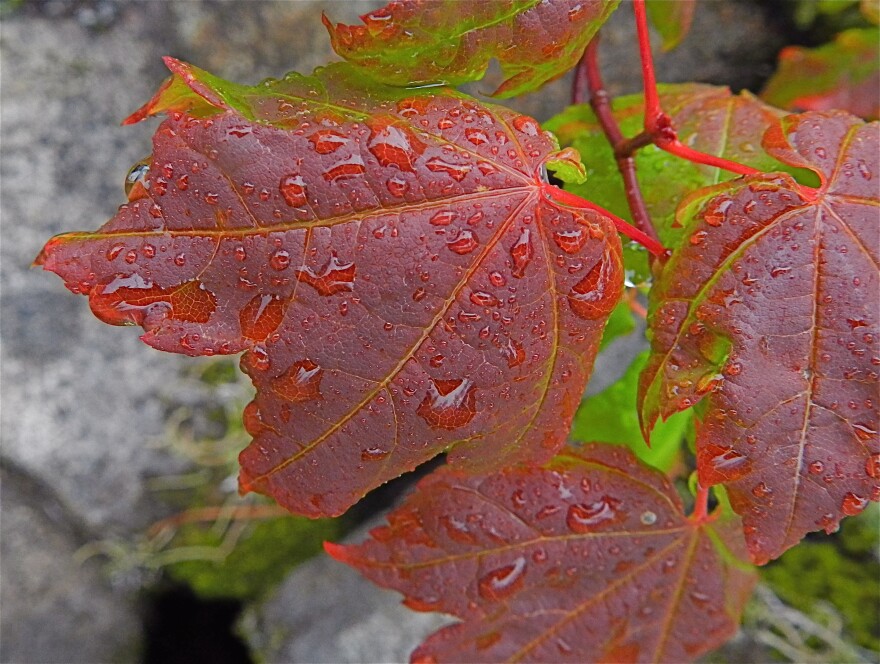A little rain then flurries about noon, then this afternoon, hazy sky, white sun low in the southwest, I walked along the brooks, water higher than it had been in weeks, and all around me the chickweed was rising through the mulch of the last honeysuckle leaves, through the crumbling strata of summer and fall, along the banks of the river, and up the wooded talus slopes, and there was garlic mustard, too, and sweet rockets and fresh wild onions and slippery ragwort leaves and floppy leafcup in between the trunks of fallen trees covered with moss and mushrooms.
Cabbage butterflies were still common. Wood ducks were migrating down river, blackbirds clucking, kingfishers screaming and racing back and forth above the water. Some robins peeped in the honeysuckles. A large flock of doves scattered away from me near my second fishing hole.
Watercress was coming back in the creek, and my paths were still green, dappled with late violets new flowers of this prophetic season. Beside these promises, the bright fruits of barberries, rose hips, and coralberry were shining springlike in the dull fields and hedgerows.
At home this evening, I found two strawberries lying red in the garden, sweet and firm. The temperature dropping into the middle 40s, I walked to the sound of intermittent crickets lisping in the bushes and at least three loud katydids rasping against the chill across the neighborhood.
This is Bill Felker with Poor Will’s Almanack. I’ll be back again next week with notes for the fourth week of late Fall. In the meantime, as the moon wanes through the night, listen for the last crickets and katydids of the year.



